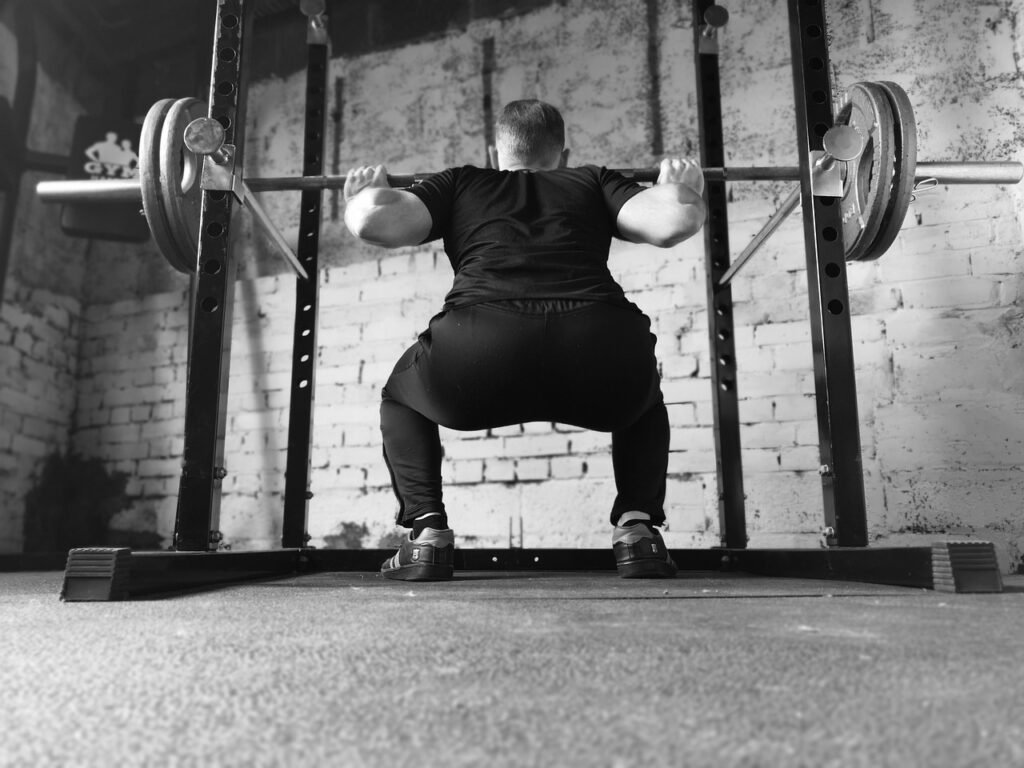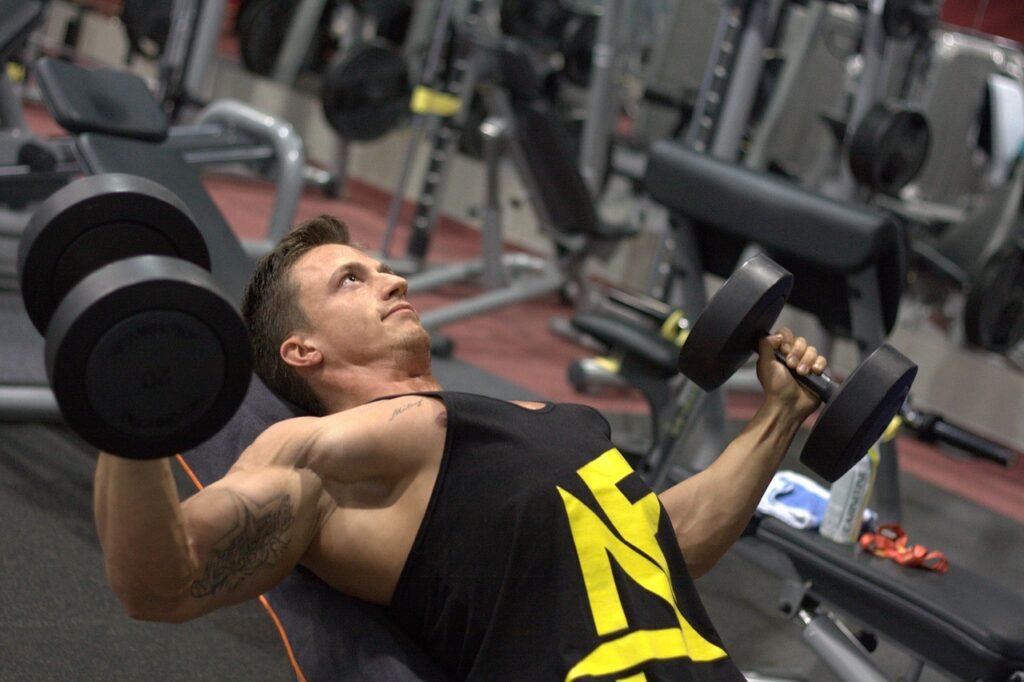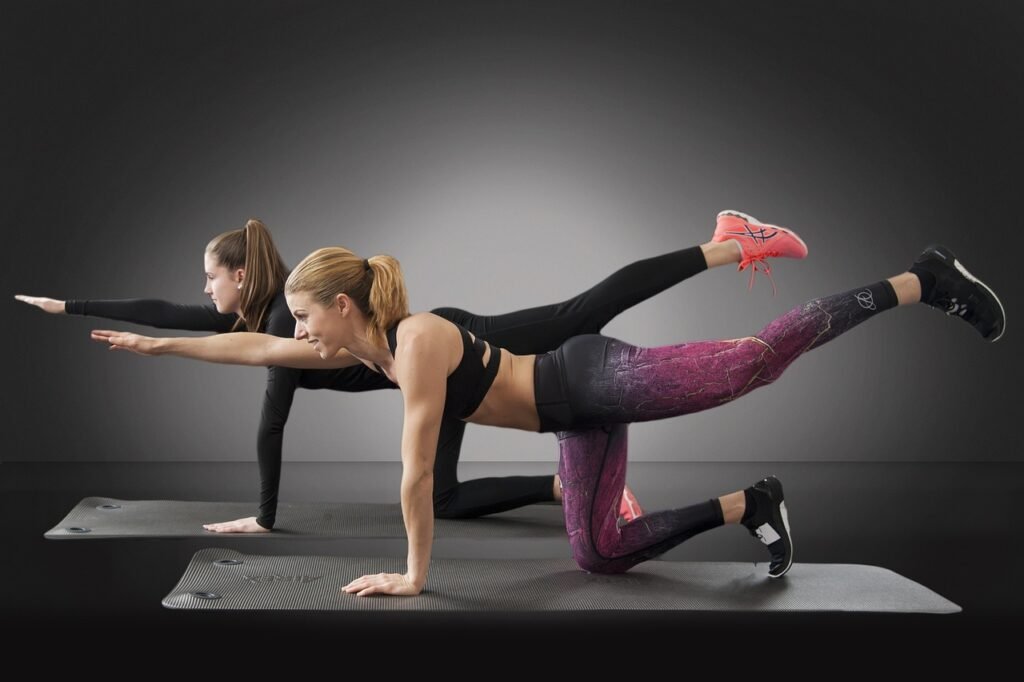
The world of fitness and wellness is constantly evolving, introducing fresh and innovative ways of staying fit. A concept that is rapidly gaining popularity is functional strength training. This blog post aims to shed light on this fitness approach, exploring what it entails, its advantages, how it differs from traditional weight training, and how to incorporate it into your fitness routine. Read on and broaden your fitness perspective!
An Introduction to Functional Strength Training

Stepping into the realm of functional strength training, it’s like turning the lens on the intersection of fitness and your day-to-day life. This workout approach, hailing from the foundations of rehabilitation therapies, is all about empowering your regular activities with improved strength and coordination. Think of it as transforming your body into a well-oiled machine that’s ready to tackle everyday tasks with enhanced efficiency.
Functional strength training is like an echo of your daily movements. It makes use of exercises that engage multiple muscles and joints simultaneously, just as you do when performing routine actions. So, whether you’re lifting, pushing, pulling, or bending, these movements are mirrored in your training regime, creating a seamless connection between your workouts and daily life. With functional strength training, the gym isn’t just a place to break a sweat – it’s a practice ground for the real world!
The Purpose and Benefits of Functional Strength Training

Functional strength training is like your body’s superhero cape – it equips you with the power to perform everyday tasks with ease and keeps you shielded from injuries. The primary aim of this training approach is to make your day-to-day activities feel like a breeze. Whether it’s hoisting a heavy suitcase into the overhead bin, picking up your toddler, or even performing a perfect jump shot in your weekend basketball game, functional strength training is the key that unlocks your body’s potential.
The benefits of this training go beyond just strength. It also works on enhancing your body’s balance and agility. These improvements can have a significant impact on your daily life. Imagine nimbly maneuvering through a crowded subway station during rush hour or easily maintaining your balance on a slippery sidewalk – these seemingly small victories can vastly improve your quality of life.
Another significant advantage of functional strength training is its focus on muscle endurance. Just like a marathon runner, your body needs to sustain its strength over time to perform extended tasks efficiently. Whether it’s spending a day hiking or engaging in a long day of gardening, functional strength training equips your muscles with the endurance they need to keep going.
Last, but certainly not least, this training style is a powerful tool for injury prevention. By engaging multiple muscles and joints in unison, it promotes better body mechanics, reduces muscle imbalances, and decreases the risk of strains and sprains.
In the grand scheme of things, functional strength training not only benefits your body but also your mind. Achieving these small, everyday victories can boost your confidence and self-esteem, making you feel empowered in your daily life. This, in turn, promotes a positive mindset and contributes to overall mental well-being. Indeed, functional strength training is a perfect blend of physical prowess and mental strength!
Core Components of Functional Strength Training

The essence of functional strength training is encapsulated in three key elements. The first element is the simultaneous engagement of multiple muscles and joints in each exercise. This multi-muscle involvement not only amplifies your overall body strength but also improves balance, making you more agile in your everyday tasks.
The second core component revolves around the flexibility of the exercises. Unlike traditional workouts that follow a strict pattern, functional strength training allows for personal customization. Depending on your current fitness capabilities, you can modify the intensity, speed, and range of motion for each exercise. This means you’re always challenging yourself without risking injury, making every workout uniquely tailored to your needs.
The third and perhaps the most distinguishing characteristic of functional strength training is the real-world application of the exercises. This isn’t about flexing your muscles in front of a mirror; it’s about training your body for real-life scenarios. Every exercise you perform in a functional training session has a direct correlation to a movement you do in your daily life. It’s like your regular routine, only supercharged!
To put it simply, functional strength training is about merging different muscles and joints in a single movement, tweaking exercises according to individual fitness levels, and replicating everyday movements within the training routine. This fitness approach offers an exciting and practical way to enhance your body’s functionality, transforming everyday tasks into a seamless and efficient routine. So, get ready to embrace functional strength training and experience a new level of fitness that truly complements your lifestyle!
The Difference Between Functional Strength and Traditional Weight Training

Traditional weight training and functional strength training both embark on the journey to enhanced physical strength, but their paths diverge when it comes to the methodology. Imagine traditional weight training as a focused beam, highlighting and working on one muscle group at a time through controlled, often machine-assisted, and repetitive movements. It’s like a targeted approach to improving your body’s strength, one muscle at a time.
On the other hand, functional strength training is more like a wide-angle lens, capturing multiple muscle groups and joints in one shot. It does not isolate, but rather integrates various muscles and joints, imitating the movements you execute daily. So, instead of training one muscle to lift a heavyweight, functional strength training equips your entire body to work in harmony, reflecting the way you move in real life.
To put it into a more relatable context, traditional weight training is like practicing piano scales – you’re focusing on one note at a time. Functional strength training, in contrast, is like playing a full melody, where all the notes need to work together to create a harmonious sound.
This divergence in approach gives each training type its unique benefits and applicability. Traditional weight training might appeal more to those who wish to sculpt and define specific muscles. In contrast, functional strength training is more geared towards enhancing overall body strength, balance, and coordination, thereby making everyday tasks easier and more efficient.
In essence, while the goals of traditional weight training and functional strength training overlap, the journey they take you on is uniquely distinct, offering a different set of benefits and experiences. Choose your path wisely based on your fitness goals and everyday needs.
Incorporating Functional Strength Training into Your Routine

Integrating functional strength training into your fitness regime isn’t a Herculean task. It’s a process that’s as simple as connecting the dots between your daily actions and the exercises that mimic these movements. Let’s consider a few examples. Do you routinely lift heavy boxes or bags? Incorporate deadlifts into your routine to simulate and enhance this movement. Do you find yourself frequently sitting down and getting back up? Squats can be your go-to exercise. Pushing open heavy doors can be mirrored in push-ups. The magic of functional strength training lies in its direct applicability to your daily life.
To start, identify the movements you engage in on a daily basis. Be it picking up your toddler, moving furniture, or reaching for items on a high shelf, your day is filled with these functional movements. Once you have identified these movements, the next step is to match them with similar exercises. There are countless resources available online and expert trainers at your local gym who can guide you in the right direction.
You can also consider introducing fitness equipment to challenge your muscles and make your workout more interesting. Kettlebells, stability balls, resistance bands, or even your own body weight can all be used to enhance your functional strength training. Remember, the goal is to engage multiple muscle groups in a single movement, just like you do in your daily life.
As with any new fitness routine, it’s important to start slow and gradually increase your intensity as your strength and stamina improve. This ensures you’re constantly pushing your limits without risking injury. It’s also crucial to listen to your body and adjust your workout accordingly. If a certain exercise causes discomfort or pain, modify it or find an alternative that works for you.
In the realm of functional strength training, there’s no one-size-fits-all approach. It’s about creating a personalized training routine that aligns with your daily movements and fitness goals. So, embark on this journey towards functional fitness, and watch as your everyday tasks become a seamless and efficient routine! Remember, every step you take on this path is a step towards a stronger, healthier, and more capable version of you. Let the world be your gym, and let your life be your workout!
Success Stories from Functional Strength Training

From the court to the field, and everywhere in between, the stories of success from functional strength training are as varied as they are inspiring. It’s not just about individuals looking to make their daily tasks easier, but also athletes and professionals who have used this form of training to elevate their game and ensure their bodies are primed for performance.
A shining testament to the effectiveness of functional strength training is visible in the world of professional sports. Athletes, known for pushing their bodies to the absolute limit, have incorporated functional training into their regimes to bolster performance and minimize the risk of injury.
Consider the world of football, where players need to be quick on their feet, able to change directions in a split second, and possess the strength to withstand tackles. Functional training helps these athletes to not just build strength, but also enhance their agility and endurance. Similarly, basketball players use functional strength training to improve their vertical jump, and baseball players incorporate it to enhance their swinging and throwing power.
Then there’s the world of running, where endurance and balance are key. Runners, both amateurs and professionals, have found success with functional strength training by improving their running economy and reducing the risk of common running injuries.
In the fitness world, personal trainers and physical therapists are another group that has embraced functional strength training. They’ve seen firsthand how it helps their clients recover from injuries, improve mobility, and gain strength that directly impacts their day-to-day lives.
It’s not just these success stories that speak volumes about the effectiveness of functional strength training. There are countless other instances of everyday individuals who’ve adopted this fitness approach to make their lives easier, healthier, and more efficient. Be it a busy parent gaining the strength to carry their growing toddler with ease, a senior citizen improving their balance to prevent falls, or an office worker boosting their endurance to combat the fatigue of a long day, functional strength training has proven to be a game-changer.
These stories of success, ranging from professional athletes to everyday heroes, serve as powerful testimonials to the transformative power of functional strength training. They underscore the fact that this fitness approach isn’t just about building muscles – it’s about enhancing your life, one functional movement at a time!
